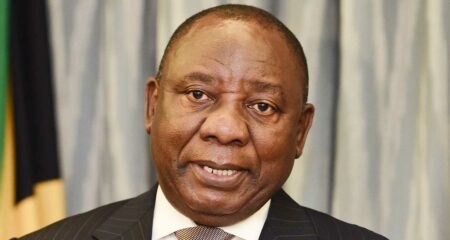
South Africa plans to try and resolve its chronic power shortage by making it easier for private companies to build plants and paying households and businesses to produce electricity from solar panels.
The urgent need to fix the country’s 14-year electricity crisis has been laid bare by five weeks of power outages that ended last week, the worst since the near-collapse of the grid in 2008. President Cyril Ramaphosa and the ANC have been heavily criticised over their inability to resolve the problem, despite repeated promises to do so.
We need to “open the floodgates for private investment in new generation capacity”, the presidency said in a presentation to opposition parties on Monday. “Our overriding priority is to add as much new capacity to the grid as possible, as quickly as possible.”
With Eskom saddled with R396-billion of debt and unable to meet demand from its fleet of ageing and poorly maintained coal-fired plants, the country is turning towards renewables and the private sector for power provision. That’s met an ideological backlash from powerful interests within the ANC that want greater state control of the industry.
Ramaphosa has said he will publicly announce a plan to tackle the crisis in coming days. Calls to his spokesman, Vincent Magwenya, weren’t immediately answered.
In addition to seeking power from private sources, the government also wants to resolve some of the issues plaguing Eskom, such as the need to repair broken units, the presidency said. The company can reliably produce about 26GW at present, against a winter peak of 32GW.
Almost double
The presidency’s plans would add 7.2GW of capacity within three months, a further 5.7GW in a year and 9.8GW in 18 months, meaning that the amount of available generation capacity could almost double.
Those gains would come from Eskom units returned from outages, demand management, new generation capacity, private investment, power from solar panels on rooftops, and the completion of the Medupi and Kusile coal-fired power plants. Beyond 18 months, there is scope to see a further 8.7GW of new generation capacity procured, the presidency said.
The need for investment in transmission and distribution infrastructure and “credible, confidence-boosting measures” is also part of the plan, to “assure South Africans that significant actions are being taken to address the crisis”.
The main points are as follows:
- Boosting the recruitment of skilled workers at Eskom and address sabotage and theft at the utility;
- Improving logistics to ensure that diesel-fired turbines are supplied in timely fashion;
- Allowing Eskom to buy excess power from private producers;
- Importing more power from countries in the region;
- Implementing a programme to incentivise the efficient use of power to cut demand by 600MW;
- Easing local content requirements so that renewable power projects awarded in the so-called Bid Window 5 can go ahead;
- Boosting the size of the sixth bid window and expediting further rounds; and
- Announcing a plan to deal with Eskom’s debt before October.
“Cabinet has decided to establish a national energy crisis committee, which will involve all relevant ministers, departments and agencies, with a technical team chaired by the director-general in the presidency,” the plan said. — (c) 2022 Bloomberg LP




